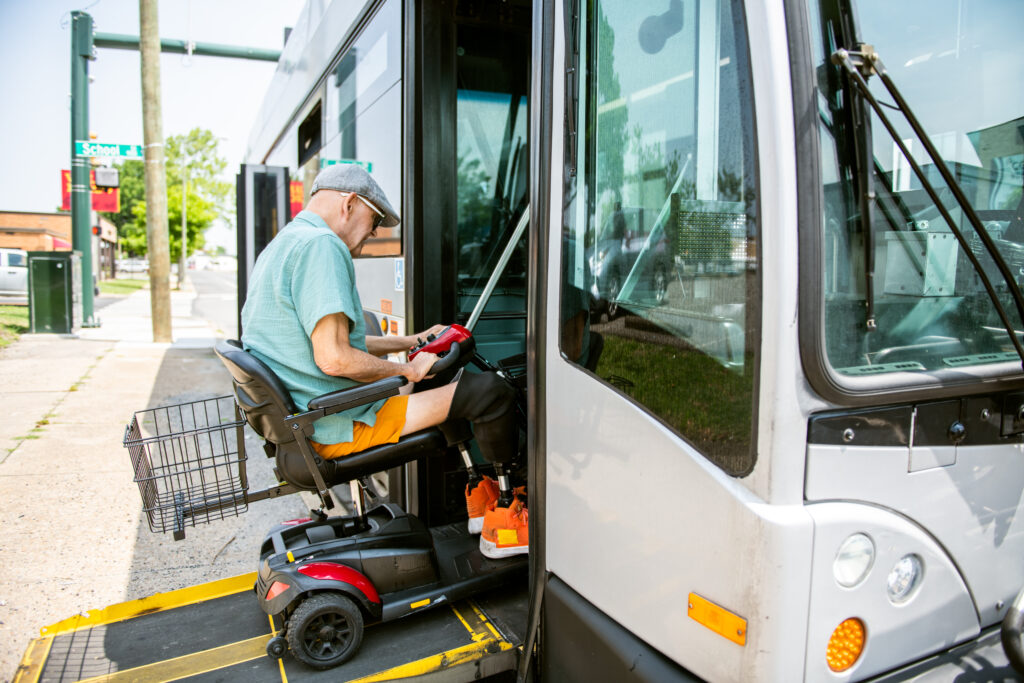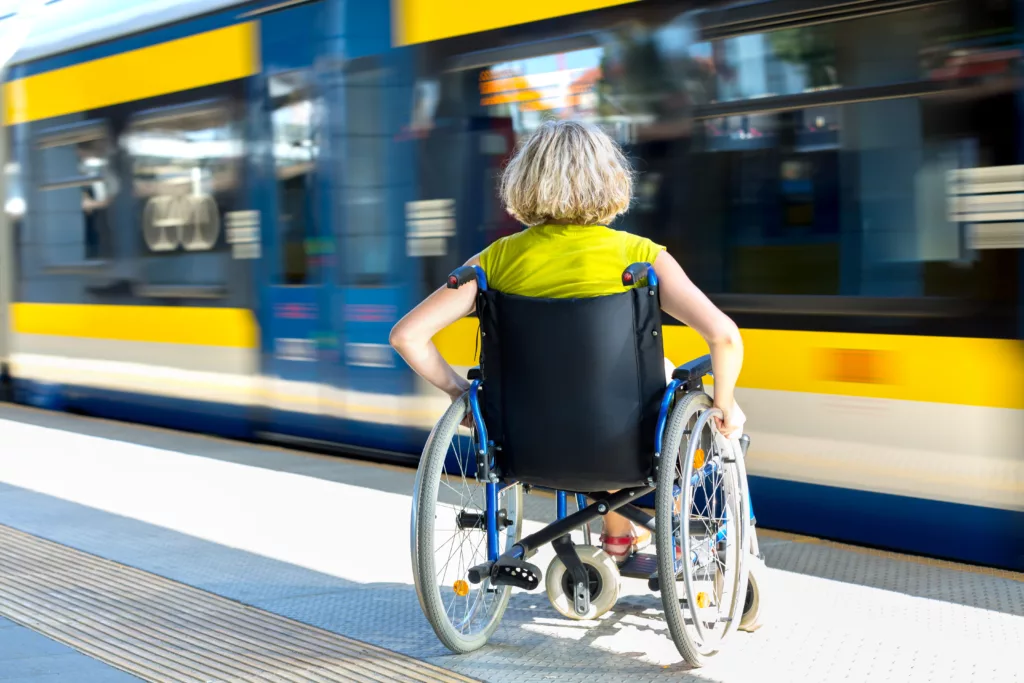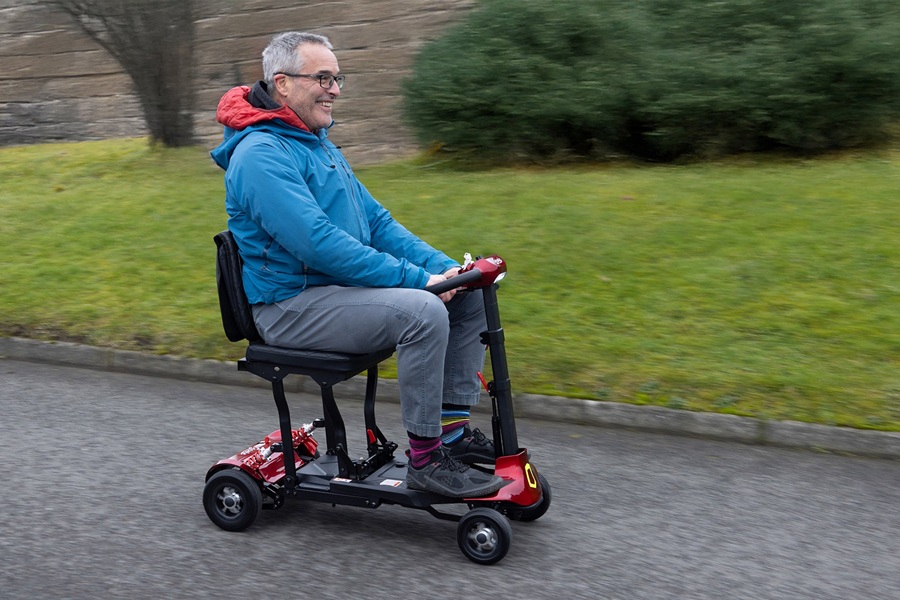
Owning a mobility scooter or electric wheelchair not only makes daily travel easier but also opens up opportunities to explore beyond your local area. It means you’re not limited to staying close to home – whether you want to head to the shops, get to an appointment, or enjoy a weekend away, public transport can help you get there.
A common question when you own a mobility aid is, “Can I take my mobility scooter or wheelchair on a bus or train?” The answer, in most cases, is “yes” – especially if you have a lightweight or foldable mobility scooter or wheelchair as they are generally more widely accepted across all public transport options.
In this article, we’ll explore the legal requirements designed to support accessible travel, along with practical tips, useful advice, and helpful resources to make your journey run more smoothly.
There is no legal obligation for buses or coaches to carry a mobility scooter, so it’s important to check before you travel as each bus service provider will have its own policy.
Most Class 2 mobility Scooters (lightweight mobility scooters) are allowed on buses, but Class 3 scooters are unlikely to be allowed as they are too heavy and bulky. Find out more about Class 2 and Class 3 Mobility Scooters.
According to The Confederation of Passenger Transport UK (CPT), to allow your Class 2 mobility scooter onto a bus, it should adhere to the following:
You can read more about the requirements in this CPT leaflet.
If you meet these criteria, you must acquire a valid permit (usually free) to take with you when you travel. You will need to contact your local bus company for further information.
Buses and coaches are legally required to have features for disabled people, and standard wheelchairs must be permitted on all public buses.
A standard wheelchair is:
On a wheelchair accessible bus, the driver can only refuse to let you get on if:
If other passengers are standing in the wheelchair space, they are required to move.
Taking a wheelchair or a powerchair on a bus should be fairly straightforward. Most buses have a wheelchair ramp, which the driver will set up to help you get on and off the bus.
Mobility scooters on trains are usually allowed; however, there may be restrictions, so it’s always worth double-checking with your train provider.
Your mobility scooter should be no more than 700 mm wide and 1200 mm long, and the combined weight of the scooter and user should not exceed 300 kg.
To take a mobility scooter on a train, some providers require a permit before you can travel; the rail provider will be able to advise you further.
It’s worth remembering that even if you have checked if you can get on a train with your mobility scooter, you may not be able to board the train if it is unsafe or overcrowded. Pre-book to ensure you get a space and any assistance at the station.

Wheelchair access on trains is usually permitted as long as the wheelchair fits within the dimensions specified by government regulations (700mm wide by 1200mm long). Each train operator has different policies regarding weight, measurements, and class, though, so it is worth checking. Furthermore, older trains may not have the space to host larger wheelchairs, so again, it’s worth checking with the train provider.
There are limited spaces available to wheelchair users on each train, so it’s worth making a reservation if possible.
Accessible travel on trams and coaches tends to depend on the service provider, so it’s best to check their website or contact their customer service team for specific details.
Travelling on the underground with a mobility scooter or wheelchair can be complex due to the age of the infrastructure. Check the TfL website for information on access, boarding points, boarding ramps, and safety.
Having the freedom to enjoy days out with friends and family or run essential errands using public transport is incredibly important for those with mobility needs.
Whilst most public transport services accommodate mobility aids, it’s always a good idea to check with the service provider if you plan to take your wheelchair or mobility scooter on trains and buses. They will be able to offer further information about their regulations and the support available from their staff during your journey.
No matter how you travel, a lightweight mobility scooter or powerchair will certainly make your journey easier and more accessible. Monarch Mobility offers a wide range of lightweight and Class 2 scooters, as well as lightweight electric wheelchairs (powerchairs) – designed for convenience and ease of use.
For more information, browse the Monarch website or call our experts for specialist advice.
